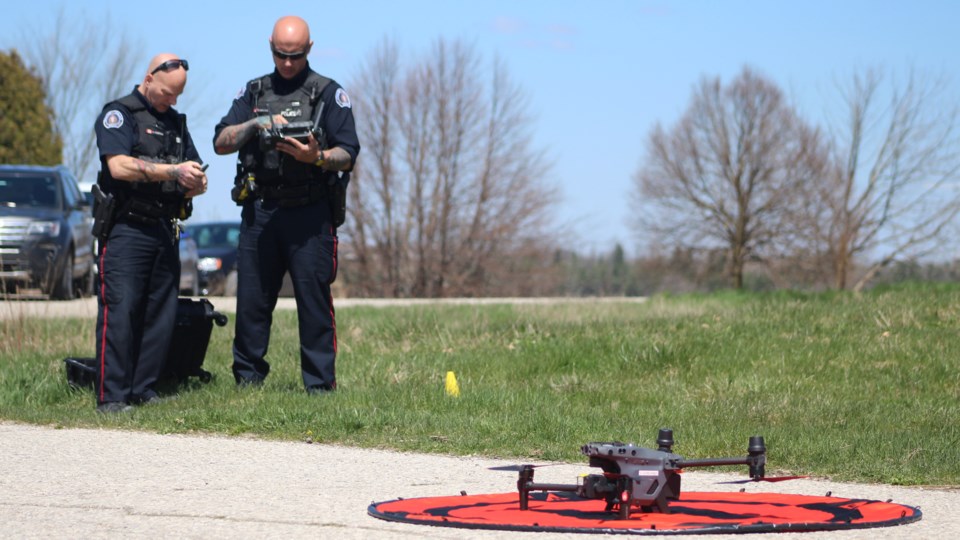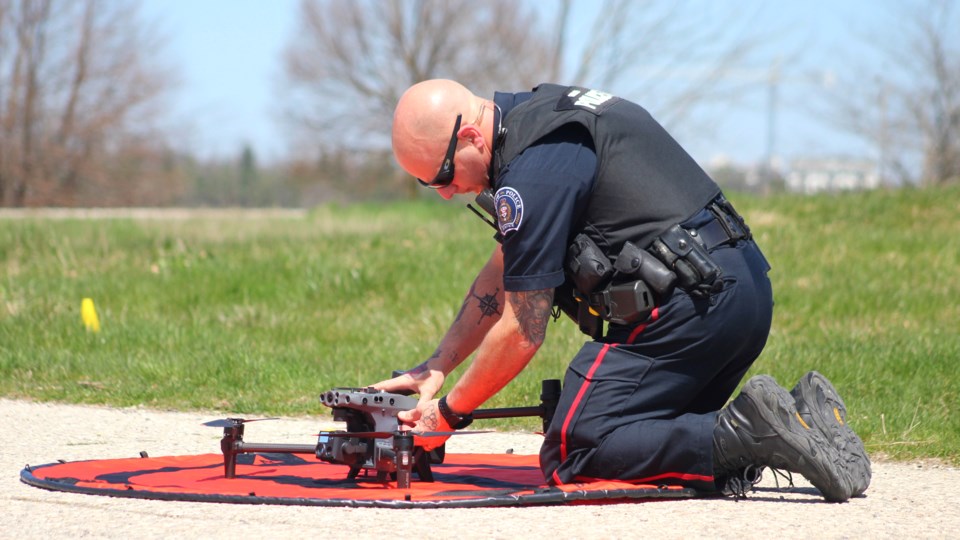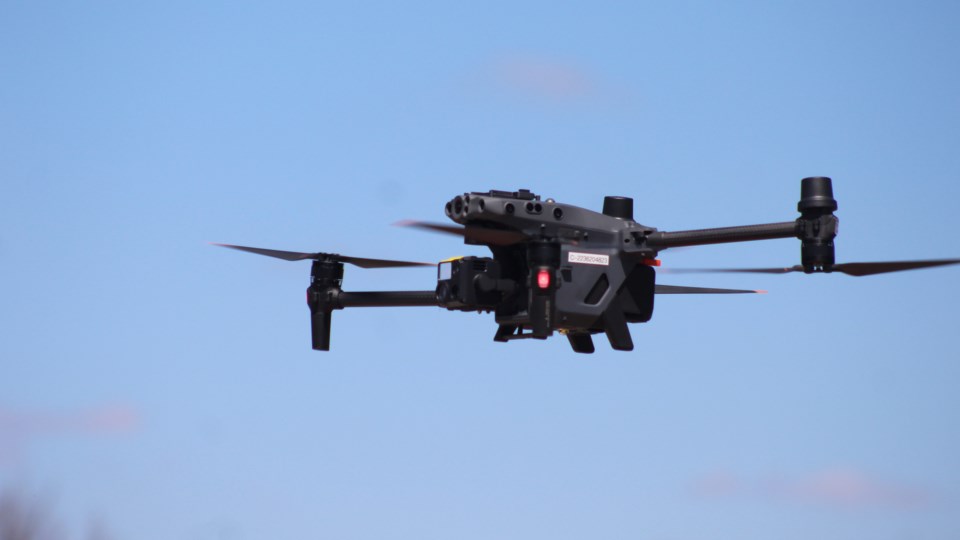The Guelph Police Service's first drone has taken to the air, an extra tool for officers who may be searching for a missing person, gathering evidence or reconstructing a crash scene.
Officers were out demonstrating the drone to media members at the former Guelph Turfgrass Institute lands on Victoria Road Thursday.
“We see it as a way to enhance our effectiveness and our efficiency, (and) support police operations in a wide variety of scenarios,” said Staff Sgt. Michael Davis.
It went into operation in August 2023, but had limited use as officers needed to be trained on it first.
In order to deploy the drone, a trained officer must be accompanied by a visual observer, and the drone cannot fly out of the eyesight of the spotter.

Six officers have been trained as pilots to fly the drone so far, and 22 visual observers have also been trained. More pilots will be trained later this year.
“You’re learning everything from clouds to air pressure,” said Const. Dave Anderson, one of the trained pilots.
“It’s amazing what they expect you to learn to fly that. It’s a Transport Canada exam, and they certify you to be a pilot.”
The drone was used nine times last year, mostly for missing person searches.
It has also been used to gather evidence related to homicide investigations, and recently after a break and enter.
“We see it applicable to a wide variety of scenarios,” said Davis.
It has already had success in its short time.
Davis recalled an incident involving a man described as “intoxicated (and) somewhat despondent” last October, in an area he didn’t know and near a woodland.
“The drone was used in that situation, put up in the air and the male was located using the thermal camera in very short order,” he said.
“You can imagine the old way of doing business, having officers deployed to search a bush area, very labour intensive.
“That was really the first demonstration we had of the operational effectiveness of this device.”

The drone itself is the DJI Matrice M30T. The cost of the program, Davis said, is around $25,000, including the drone purchase, as well as training and certification.
It has high resolution RGB and thermal cameras, a laser rangefinder system, and dual speaker/spotlight payloads.
Depending on the weather, it can fly for up to 40 minutes, has a 15 kilometre range, and has a built in stabilizer so the camera stays still amid windy conditions.
For those concerned about privacy, Davis said there are strict rules a pilot must abide by.
He admits the drone could potentially be used for surveillance, but they’d need judicial authorization in order to do so.
“We do seek to protect people’s personal information,” he said. “Anybody who sees a deployment and is concerned about their personal information can certainly contact our Freedom of Information office to determine if, say, an image or any other personal identifying information has been gathered.”
He added personal information isn’t normally retained, but if they did, it would be with judicial authorization.
You can also follow the drone’s exclusive X account to see when it is being deployed.
“We can’t use this to spy on people,” Anderson added. “We’re bound by privacy as well. We can’t go into people’s windows, we can’t go into your backyards. We have specific rules that we have to operate within as well.”

Long term, Davis said the service is looking to acquire a second drone with the same capabilities.
It is also looking to expand the program to support units, such as tactics and rescue, where it could get eyes inside a building without risking officer safety.


